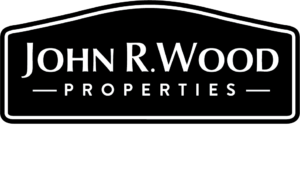
The choice to move to assisted living comes with plenty of positives. You know you’ll have the help and care you need, as well as space made for you and your abilities. However, it comes with the tricky decision of what to do with your current home.
Here’s a look at a few of the options available to you.
A Family Member’s Care
One option many seniors find very appealing is leaving their property in a family member’s care. There are many ways this arrangement can work — a family member can come to live in the home or simply stop by on a regular basis to make sure there is no damage or problems with the space. This allows seniors to keep the property in their estate, which allows them to sell it later down the road when necessary or leave it to a family member after they pass away.
The main drawback is that you will continue paying costs for the home. If your mortgage isn’t paid off, you’ll see that each month in addition to insurance costs, maintenance, and taxes.
Finding a Renter
If you’d like to keep your home but still make money off the space, you can find a renter. Turning your home into an investment property may have major benefits. First of all, renters mean income. By charging a rental fee each month, you can subsidize the cost of assisted living and make your situation as affordable as possible. Also, you’ll know someone is there to notice any subtle issues that might not be noticeable from infrequent check-ins, such as a leaky roof.
However, there are drawbacks as well. Renters are unpredictable – even if they make a great first impression, there’s no way to know how they’ll turn out through the term of the lease. They may break the lease early or stop paying rent, costing you unexpected work and loss of income. It’s possible they’ll ignore or cause damage that cannot be covered by that initial deposit. Finally, if you wind up needing to evict a renter, it can lead to a costly legal battle.
Selling the Home
There are several big advantages to selling your home. The first is simple – you’ll get money from the sale that you can put toward your future expenses. Assisted living facilities can run the expense gamut, so any extra cash you have set away will protect you from coming up short further down the road.
Moreover, a house you’ve sold is no longer your job or responsibility. Any future damage or improvements the space may need won’t have to come out of your pocket. Although renters and family members may be able to supplement those costs, for someone on a fixed income, it can make the most sense to avoid them altogether.
Improving Curb Appeal
Landscaping and outdoor furniture can go a long way toward making the façade appealing. If you are responsible for maintaining the land around your home, invest in some landscaping – bushes, flowers, and a neat lawn make a great impression.
If you are not responsible for maintaining the land around your home, you can still increase its curb appeal with less permanent changes. Simple additions such as potted plants, flowerbeds in window hangers, and a nice set of patio furniture can make a big impact.
Don’t forget to stage the interior for sale as well. Buyers looking at online listings or coming to view the home will be wowed by fresh paint, clean carpets, and neat, tidy décor. Avoid going too stylized with your interior design – everyone has different tastes, so anything too distinct could turn buyers off. It’s also important to take down personal touches such as family photos. You want potential buyers to be able to see themselves there, not remind them it’s currently yours.
Whatever you decide, make sure to research the options to stay aware of the pros and cons. By keeping yourself informed, you can make the transition to assisted living with confidence.

